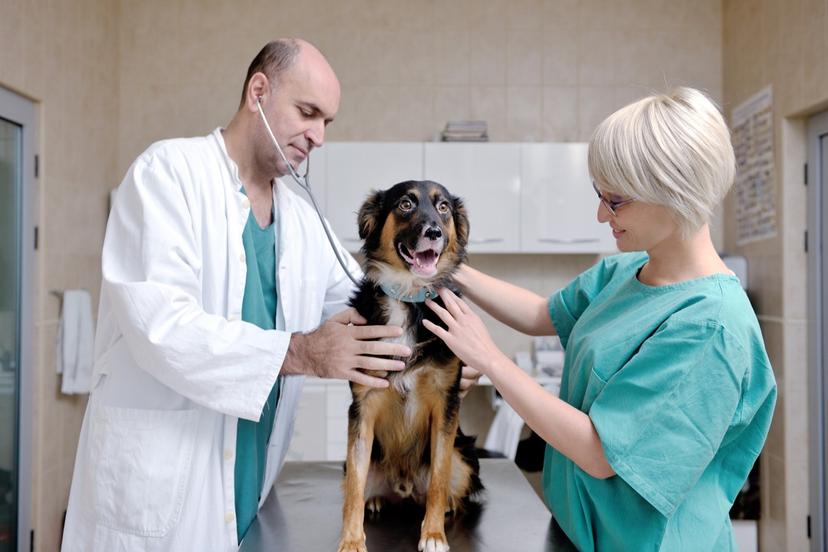Veterinary Medicine and Animal Care

Structure
The animal care industry can be divided into two areas, although there are many jobs common to both. One area is the study and care of animals in the wild, which includes conservation, preservation of habitat, and research. The second area is the breeding and care of domesticated animals, including livestock, pets, and animals bred for sport and leisure.
People who study and care for fish and wildlife are generally well educated and highly experienced. Biologists, zoologists, veterinarians, and ecologists are some of the scientists who work in the field, in laboratories, wildlife refuges, museums, and zoos. They observe animals in the wild and in captivity to better understand their behavior—what they eat, how they mate, their social structure, how they defend against predators, how they raise their offspring, where they travel, and how they interact with other animals and their environment. This helps scientists not only understand a particular species, but contributes to overall knowledge of the intricate living world, including human life. Knowledge about wildlife also helps scientists preserve natural habitats with hopes of preventing extinction of threatened species. Captive animals are also studied, as their behavior is altered by living in unnatural habitats and having to interact with and depend on humans. Some zoos and research facilities try as best they can to recreate as natural a habitat as possible, and some have programs for breeding threatened species in captivity with hopes of returning them to the wild.
Scientists are assisted by zookeepers, breeders, technicians, photographers, park rangers, caretakers, administrators, facilities managers, and other support workers with a wide variety of education and experience levels. Most positions in wildlife care are extremely competitive because of the large numbers of people interested in this field. More people will be attracted, too, as attention is drawn to the species and habitats that are being threatened by human population growth and industrialization. Many people choose to volunteer at zoos and parks while they pursue higher education.
The care of domesticated animals also requires a wide variety of workers. The agricultural industry involves the care and handling of beef and dairy cattle, hogs, poultry, sheep, goats, and fish and shellfish.
The people who care for livestock and poultry on a daily basis are the farmers, farm managers, and agricultural technicians who feed the animals and keep barns, pens, coops, and other farm buildings clean and in good condition. They oversee breeding and marketing activities. Aquaculture farmers raise fish and shellfish in marine, brackish, or fresh water, usually in ponds, floating net pens, raceways, or recirculating systems. They stock, feed, protect, and otherwise manage aquatic life sold for consumption or used for recreational fishing.
Scientists and researchers are also involved with the care of farm animals, including experts in breeding, diet management, and the control of diseases and pests. They monitor meat and dairy quality and safety and develop vaccines and drugs to prevent viruses and bacteria. Some scientists develop new ways to use animals for human benefit besides food, for example, to provide vaccines, hormones, glues and resins, and other products. Genetic scientists have worked with farm animals for years, trying to develop breeds that are more resistant to disease, produce more milk or eggs, or produce meat that is leaner, for example.
Pet care is a growing industry in the United States, where new pet sitting and pet grooming businesses are opening all the time. Nearly 70 percent of U.S. households have one or more pets and Americans spent more than $95.7 billion on their pets in 2019, according to the American Pet Products Association. This includes money spent on food, veterinary care, grooming and boarding, and toys and supplies. Pet care businesses are becoming more regulated but still do not have very stringent certification or education requirements. They are open to enterprising animal lovers with good people skills and business sense. A recent trend has been the opening of pet bakeries that make homemade biscuits and other treats for dogs and cats.
Pet care workers include those who need extensive training, such as veterinarians and veterinary technicians. Breeders and trainers need less rigorous training, but more experience. Positions that require little formal training or on-the-job training include groomers, kennel workers, pet sitters, dog walkers, animal shelter employees, and pet store workers.
A number of domesticated animals are raised for sport and leisure. Equestrian management is big business, with millions of domesticated horses in the United States. Those who work with horses include farriers, horse breeders, horse trainers, jockeys, stable managers, riding instructors, ranch managers, racetrack managers, breeders, and groomers. Horses are raised for racing, showing, and riding. They are the only animals that participate in the Olympics, in events such as dressage, show jumping, and cross-country jumping. Horses are also bred and trained for polo, rodeo, and police work.
Most types of domesticated animals are raised for show competition, including cows, pigs, chickens, horses, dogs, and cats. Some domesticated animals as well as wild animals bred in captivity are used in circus and entertainment acts and in movies. These include horses, dogs, elephants, chimpanzees, bears, lions, and tigers. Animal rights activists have worked to ensure that these animals are well cared for and not mistreated in any way. As a result of stricter requirements for animal care, animals are used less and less in circuses and related entertainment venues.
